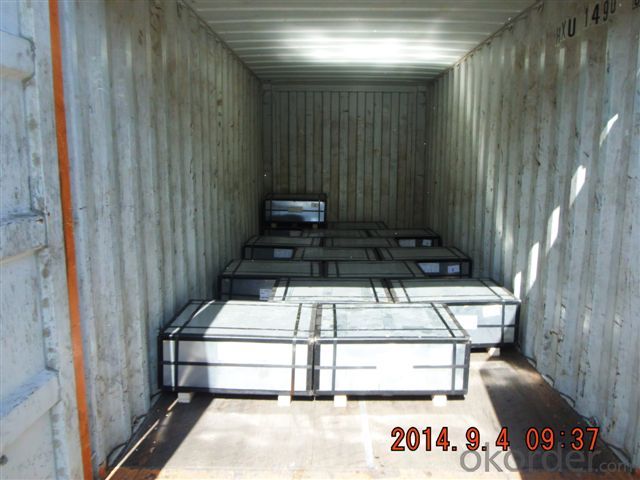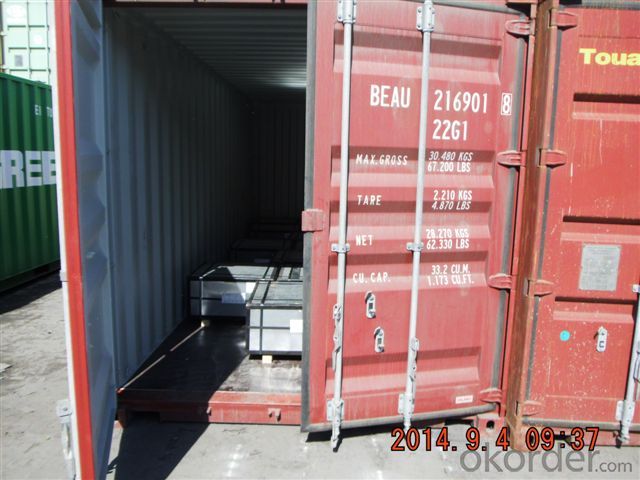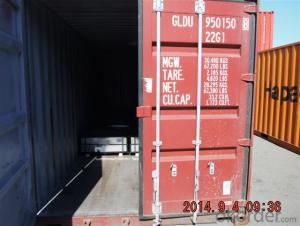ETP in MR/ SPCC Grade for Making Aerosol Cans
- Loading Port:
- China main port
- Payment Terms:
- TT OR LC
- Min Order Qty:
- 25 m.t.
- Supply Capability:
- 30000 m.t./month
OKorder Service Pledge
OKorder Financial Service
You Might Also Like
1. Products: Tinplate
Tinplate and TFS are widely used for making all types of containers such as artistic cans, tea cans, painting cans, chemical package cans and metal printing etc. Its applications are not limited to containers; recently, they have also been used for making electrical machinery parts and many other products.
2. Specification:
Our goods enjoyed high quality both at home and abroad. We can supply tin free steel as follows:
Technical standard | JISG3303 and GB/T 2520-2008 |
Steel Type | MR / SPCC |
Thickness | From 0.15mm to 0.50mm (Tolerance +/- 0.01mm) |
Width | Normally 600-1050mm (Tolerance +3/-0 mm) |
Coating | 2.8/2.8g/m2 , 2.8/5.6g/m2 ,1.1/1.1 g/m2 |
Temper & Annealing | T1-T5, DR7-8, TS230-TH435, T49-T65(+/- 4) |
Surface Treatment | Bright & Fine Stone & Stone & Silver & Matt |
Payment terms | Letter of Credit (L/C), Telegraphic transfer (T/T) |
Price terms | CFR & CIF price term |
Delivery time | Within 60 days after received L/C or T/T down payment |
Packing | High quality shipping packing which contains thin plastic film, rust-proof paper, metal cover, metal angles and strap sand pallet. |
Minimum order Quantity(MOQ) | 25 metric tons (1X 20'' container) |
3. Pictures:


4. Features of the factory price/ tin free steel/tinplate/tfs/tmbp/etp/spte:
Beautiful Appearance
Excellent Paintability & Printability
Excellent Formability & Strength
Excellent Corrosion Resistance
Excellent Solderability & Weldability
5. FAQ:
We are one of the main producers in China for tinplate, tin free steel and also TMBP. At present, our productivity is more than 450000 MT/year.
For more information about our products or company, pls contact us freely.
Welcome your enquiries and orders.
- Q:What are the advantages of using tinplate in packaging?
- There are several advantages of using tinplate in packaging. Firstly, tinplate has excellent corrosion resistance, ensuring that the packaged product remains protected and fresh for a longer period of time. Secondly, tinplate is highly durable and can withstand rough handling during transportation and storage. Additionally, tinplate is easily customizable and can be printed with attractive designs, enhancing the visual appeal of the packaging. Furthermore, tinplate is a sustainable packaging option as it is 100% recyclable, contributing to environmental preservation. Overall, the use of tinplate in packaging offers enhanced product protection, durability, customization options, and sustainability benefits.
- Q:How does tinplate contribute to the reduction of plastic waste?
- Tinplate contributes to the reduction of plastic waste by providing a sustainable alternative for packaging. Tinplate containers are durable, recyclable, and can be reused multiple times. This reduces the need for single-use plastic packaging, thereby minimizing the amount of plastic waste generated.
- Q:What are the main applications of tinplate in the paint industry?
- Tinplate is commonly used in the paint industry for packaging purposes. It is primarily used for manufacturing paint cans, which provide a durable and protective container for storing paint products. Tinplate cans also offer excellent resistance to corrosion and airtight sealing, ensuring the longevity and quality of the paint. Additionally, tinplate cans are easy to handle, stack, and transport, making them a convenient choice for the paint industry.
- Q:What are the main factors influencing the demand for tinplate?
- The main factors influencing the demand for tinplate include the growth in the packaging industry, consumer preferences for canned goods, economic development in emerging markets, and environmental regulations promoting sustainable packaging.
- Q:How is tinplate coated with food-grade materials?
- Tinplate is coated with food-grade materials through a process called electrolytic tinning. In this process, a thin layer of tin is electroplated onto the surface of the tinplate, creating a protective barrier between the metal and the food. This coating ensures that the tinplate is safe for food contact and prevents any undesirable reactions between the metal and the food.
- Q:How does tinplate packaging contribute to product differentiation?
- Tinplate packaging contributes to product differentiation by providing a unique and attractive look that distinguishes a product from its competitors. The use of tinplate allows for creative and eye-catching designs, which can effectively communicate the brand's identity and create a memorable impression on consumers. Additionally, tinplate packaging offers durability and protection, ensuring that the product remains in good condition throughout its shelf life. This enhances the overall perceived value of the product and sets it apart from alternatives, thus contributing to product differentiation.
- Q:What are the advantages of using tinplate for promotional items?
- There are several advantages of using tinplate for promotional items. Firstly, tinplate is a durable material that can withstand wear and tear, making it ideal for long-lasting promotional products. Secondly, tinplate is highly customizable, allowing for various shapes, sizes, and designs to be created, enhancing the visual appeal of the promotional items. Additionally, tinplate can be easily printed on, enabling businesses to display their branding and messaging effectively. Lastly, tinplate is eco-friendly as it is recyclable, making it a sustainable choice for businesses concerned about their environmental impact.
- Q:What are the different types of tinplate seams?
- The different types of tinplate seams include lap seams, double seam, triple seam, and lock seam.
- Q:What are the main challenges in recycling tinplate?
- The main challenges in recycling tinplate include separating tinplate from other materials, such as paper or plastic coatings, as well as removing any remaining food or product residues. Additionally, the tin coating on tinplate can pose challenges during the recycling process, as it needs to be separated and recovered for reuse. Finally, ensuring a consistent supply of tinplate for recycling can be a challenge due to fluctuations in consumer demand and collection efforts.
- Q:What are the main applications of tinplate in the beverage industry?
- Tinplate is mainly used in the beverage industry for the production of cans and packaging materials. It provides a protective barrier against corrosion, ensuring the product's integrity and extending its shelf life. Tinplate cans are lightweight, easily stackable, and offer convenient storage and transportation. Additionally, tinplate's ability to be printed and decorated makes it ideal for branding and marketing purposes in the beverage industry.
1. Manufacturer Overview |
|
|---|---|
| Location | |
| Year Established | |
| Annual Output Value | |
| Main Markets | |
| Company Certifications | |
2. Manufacturer Certificates |
|
|---|---|
| a) Certification Name | |
| Range | |
| Reference | |
| Validity Period | |
3. Manufacturer Capability |
|
|---|---|
| a)Trade Capacity | |
| Nearest Port | |
| Export Percentage | |
| No.of Employees in Trade Department | |
| Language Spoken: | |
| b)Factory Information | |
| Factory Size: | |
| No. of Production Lines | |
| Contract Manufacturing | |
| Product Price Range | |
Send your message to us
ETP in MR/ SPCC Grade for Making Aerosol Cans
- Loading Port:
- China main port
- Payment Terms:
- TT OR LC
- Min Order Qty:
- 25 m.t.
- Supply Capability:
- 30000 m.t./month
OKorder Service Pledge
OKorder Financial Service
Similar products
New products
Hot products
Hot Searches
Related keywords




























